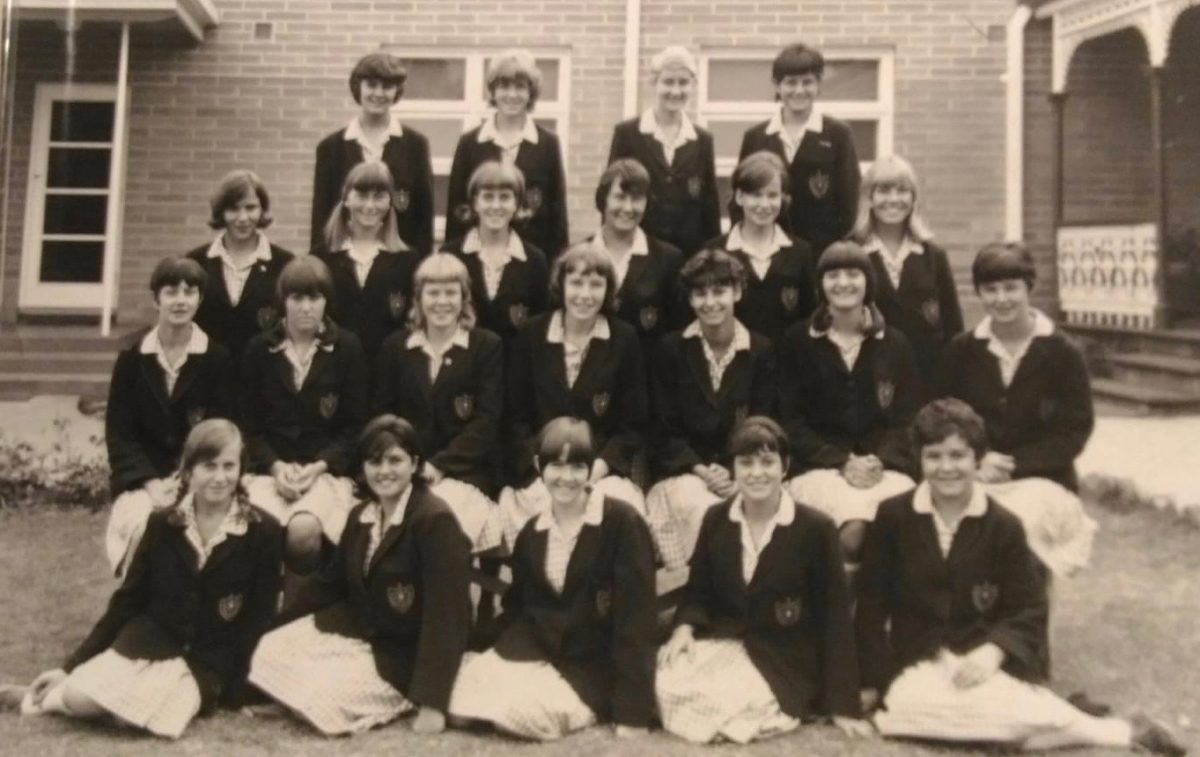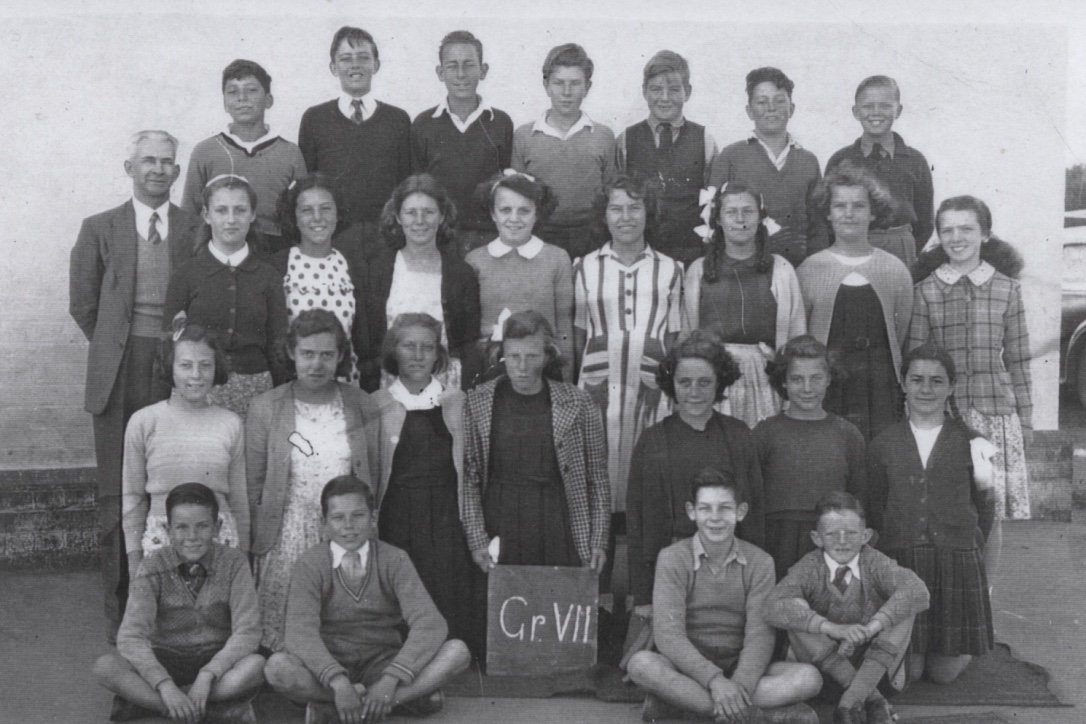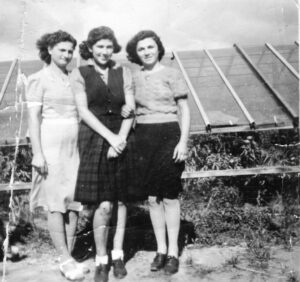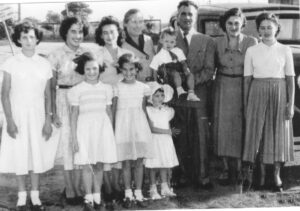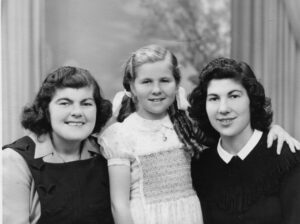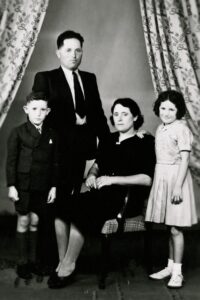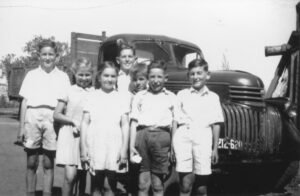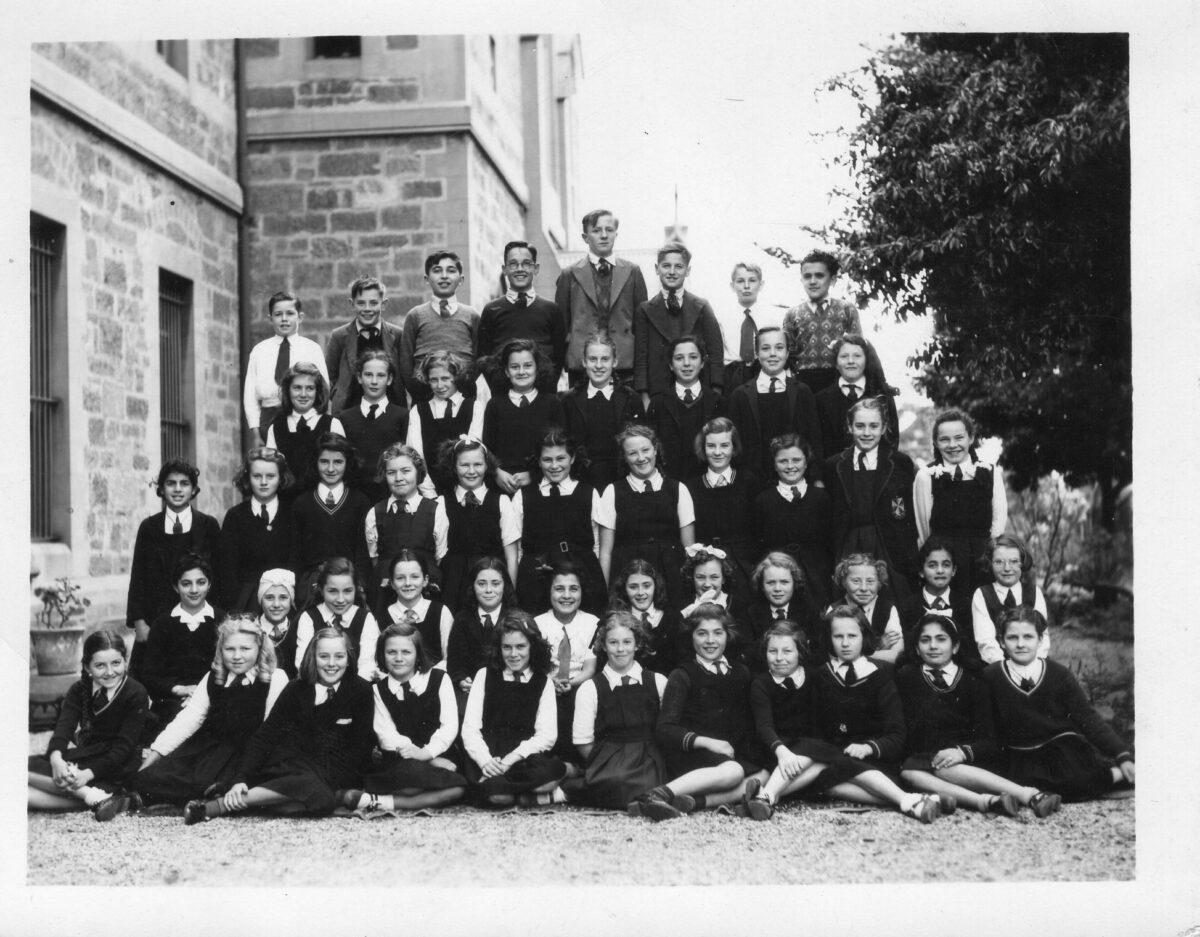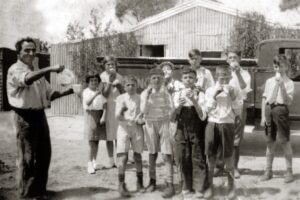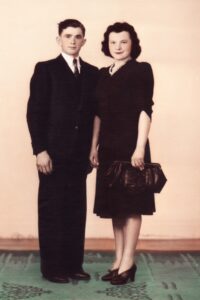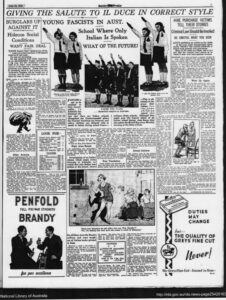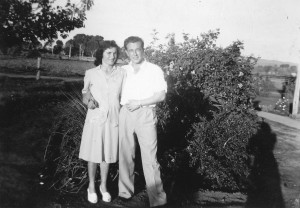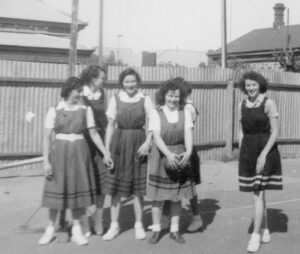This is part 3 and the final blog about memories of school shared by sons and daughters of the first generation of the Veneto market gardeners at “Lockleys.”
The image above is of the Intermediate class at St Joseph’s Hindmarsh in 1967. Diana Santin is last on the right in the front row and Irene Zampin is last on the right in the second row. Photo supplied by Irene Zampin.
As a consequence of the migration program and the growing population after the Second World War, more schools were built in every state of Australia. In Adelaide, more Catholic schools were established in parishes including in the Flinders Park parish which, at the time, was nearest to the Veneto market gardener families.
Most children in those families attended St Joseph’s Primary School in Captain Cook Avenue at Flinders Park. After primary school, the girls usually went to St Joseph’s Hindmarsh. The boys attended St Michael’s College at Beverley and when the secondary school opened at Henley Beach, they went there.
In the following excerpts from oral history interviews that held in the State Library, you’ll read memories of some children who were born in the 1940s and 1950s in Adelaide and whose parents had market gardens in the Lockleys/Flinders Park area.
Lina Campagnaro nee Ballestrin OH 872/28
Lina recalls walking to school from Valetta Road to Flinders Park and also the experience of learning to knit when she was in Reception:

I went to Saint Joseph’s and enjoyed it immensely but … I had this vision of having beautiful clean shoes when I got to school. Never did. Because we had to trudge through market gardens that was always being watered and so my shoes were always muddy. Whereas, my Flinders Park counterparts had beautiful clean shoes. [laughs] that was my memory of school, but I loved school.
I first learnt knitting when I was in Reception with the nuns and we had to knit a tea cosy just using garter stitch but I said to Mum: “Mum, I need some wool because I need to make this tea cosy.” So she gives me this ugly coloured brown wool, dark brown wool. Oh. And when I get to school these other girls have got these beautiful coloured wools. But do you know what? My Mum treasured [laughs] that tea cosy cover – it was beautiful.
Sandra Conci nee Santin OH 872/47
Sandra remembers the early days of St Joseph’s at Flinders Park when the classrooms were part of the church building:
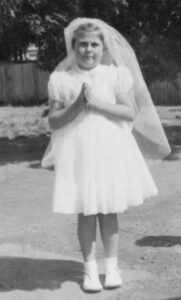
Yeah, I did like school, I enjoyed school … What did I like? To me, I thought we always had sports day, it was always sports but – I enjoyed school. Teachers – especially Sister Perpetua, a very tall nun, very nice-looking nun. In winter time there wasn’t any … heating in the classrooms, there used to be three or four classes because there used to be the church and they used to draw this big thing across the church, and we used to have the classrooms at the back end of the church and … I think there were three classrooms in the one room and we used to have little desks with the lift up tops …
The nuns were strict, you used to hear them coming down the corridor … because of the beads and things like that. But I enjoyed school, I didn’t mind going to school.
Terry Mazzarolo nee Zampin OH 872/64
Terry’s memories of school include the walk to St Joseph’s on Captain Cook Avenues and seeing the other market gardens along the way. Terry remembered also the milk that was delivered to primary schools every morning:
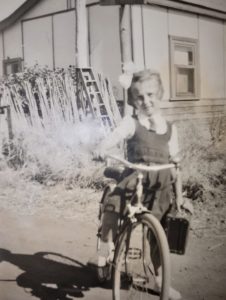
Oh, I used to walk and then I used to go to Dolfina Ballestrin’s place, pick her up, and then we used to walk … Oh, we’d know who they belong to … Zerella’s. Oh Ballestrin’s, for sure and then Zerella’s and then school … How long to get to school? It would have taken — I don’t know. Depends how fast [laughter] we walked or how many times we stopped to eat some of their carrots or something on the road. [laughs] Or their grapes.
I remember the milk, every morning we had that milk, little bottles of milk they used to deliver. And I used to love the cream on top. [laughs] I didn’t like the milk but I liked the cream. [chuckles] I remember sports days. I liked sports days.
Silvano Ballestrin OH 872/67
Silvano remembered that he was not fond of school and thought he had a good reason to stay at home to care for his sister, Norina, who was five years younger. He also recalled a teacher in secondary school, an Italian Australian man who made a positive impression on him:
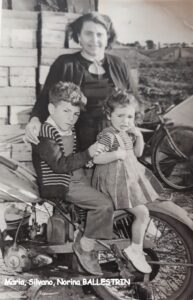
And Norina was a good excuse for me not to go to school because I’d say to Mum, ‘Do you want me to look after the baby?’ ‘Oh, no you’d better go to school.’ ‘I know, but the baby.’ [chuckles] I didn’t like school.
Mr de Pasquale, a completely different teacher to the brothers. He would never use the strap and he would always sit at the front. Or he’d sit on his desk, rather sit at the desk. And he’d start talking about anything, you know, it wouldn’t necessarily be English.
Remo Berno OH 872/46
Remo remembered that he and his brother, Robert, and sister, Diana, and cousins, Johnny and Marisa, went to primary school at St Joseph’s at Flinders Park and did not speak English until they started there. His cousin, Marisa, was only about three years old when she began school. Remo explained that Diana cried because she wanted to go to school just like Marisa.
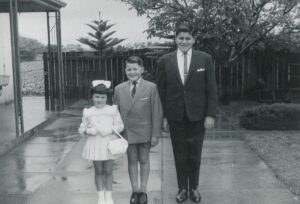
Photo, courtesy of the Berno family.
We went to school young. I think I started when I was about four — because I turned five in December so we started early … None of us went to kinder, kindergarten and so that meant we spoke Italian till school started …
And when she [Diana] saw Marisa getting all dressed up for school and everything, she started crying. And I can remember Sister Perpetua, she was the nun who ran the school in Flinders Park, saying “Oh, take her, buy her a dress, bring her to school, she’ll probably get bored and sleep or whatever it is. So, she’ll just do it for the novelty of the first few days.” And she kept on going to school from then. So, we started quite young, going to school.
Irene Zampin OH 872/45
Like several of the people interviewed, Irene remembered one of the nuns, Sr Perpetua, at Flinders Park. She had a strong memory of attending Mass before school as a way of thinking about children in third world countries:
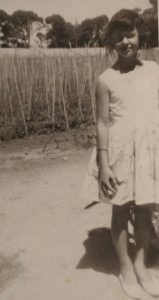
I used to remember the school, the primary school where I used to go. I remember Sister Perpetua. Probably a whole lot of people remember Sister Perpetua, she was very severe. Another thing I remember was when I used to go to school – if you used to go to Mass in the morning, you could save a little black child so they used to put a little dolly, a black dolly on a calendar … So, I used to go to Mass every morning.
Denise Doyban nee Santin OH 872/62
Denise had positive memories of St Joseph’s at Flinders Park and she also remembered parent involvement in the primary school and the limits on time for her mother and father because of their work on the market garden:
What did I like about primary school? Play. [laughter] Well, what kid doesn’t like play? It was enjoyable, we had nuns as teachers. I remember Sister Perpetua. She was, she was lovely, but oh, when she’d get upset at you … I don’t think I ever said, “No, I’m not going to school.” But then I think it was because you had your group of friends there and so you went to school.
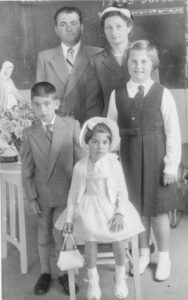
They [my parents] never had a lot of time to donate their time. But they always had time if there was [something to do] and that was with most of the market gardeners whose kids went to school there, if there was lawn to be planted, dirt to be dug … and do all the hard work. And then they’d donate for sports day … The time was too precious for them, but the goods, they always donated goods. I think Mum came a couple of times, maybe to a fete or something … the Italians and the Europeans were more in the working side, doing the working bees, you know, they could do that.
Madeleine Regan
25 February 2024
